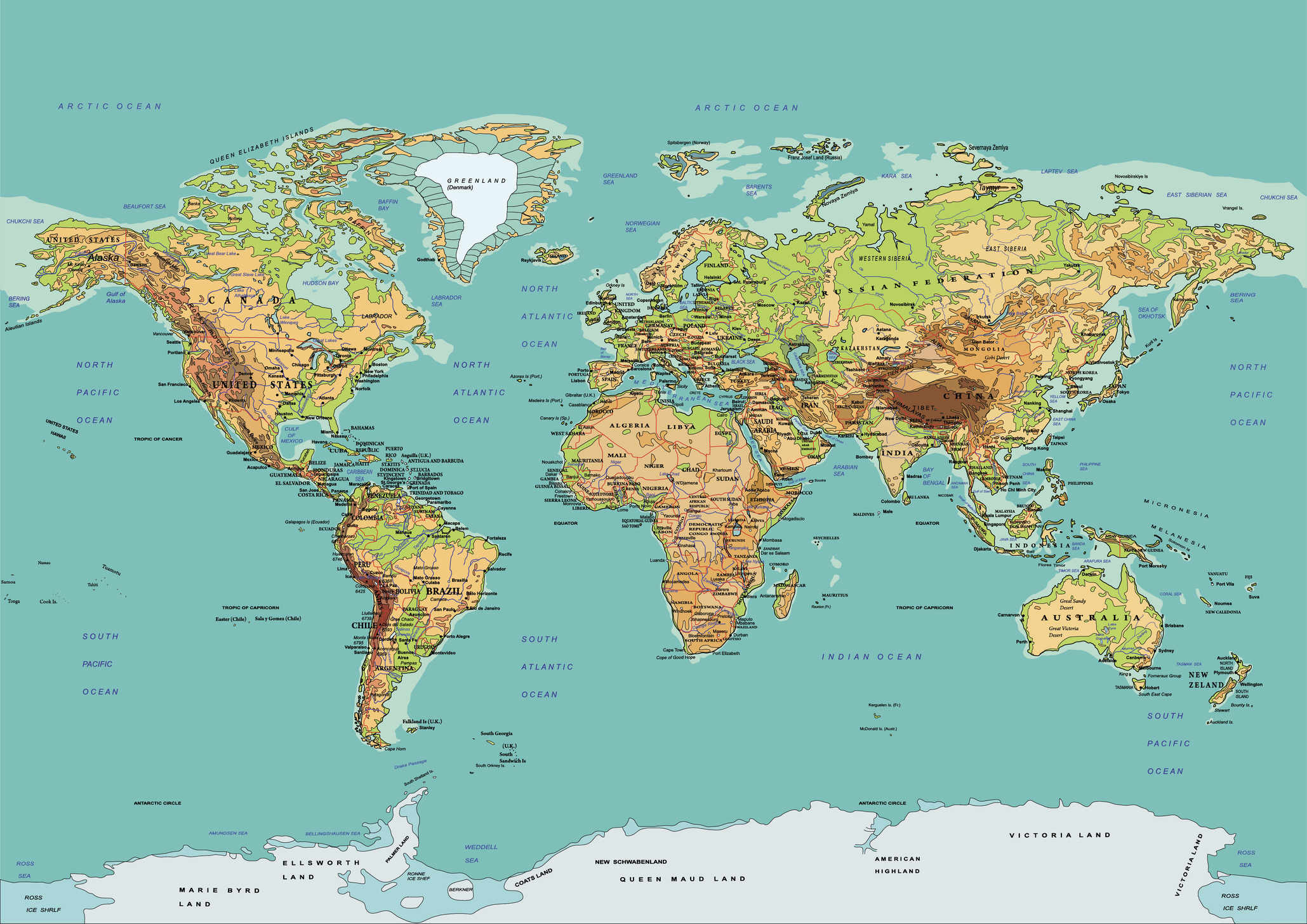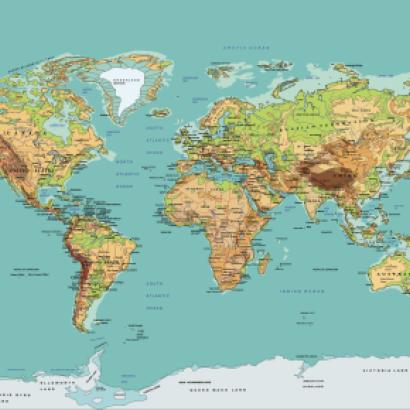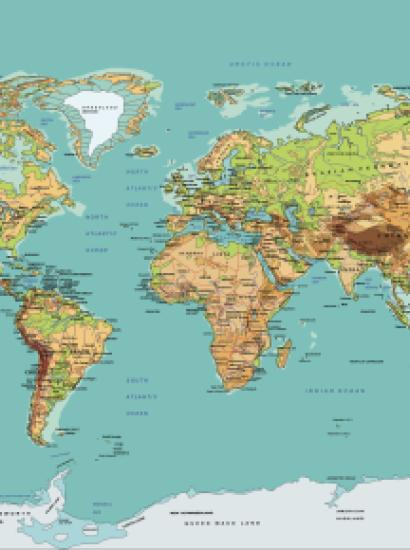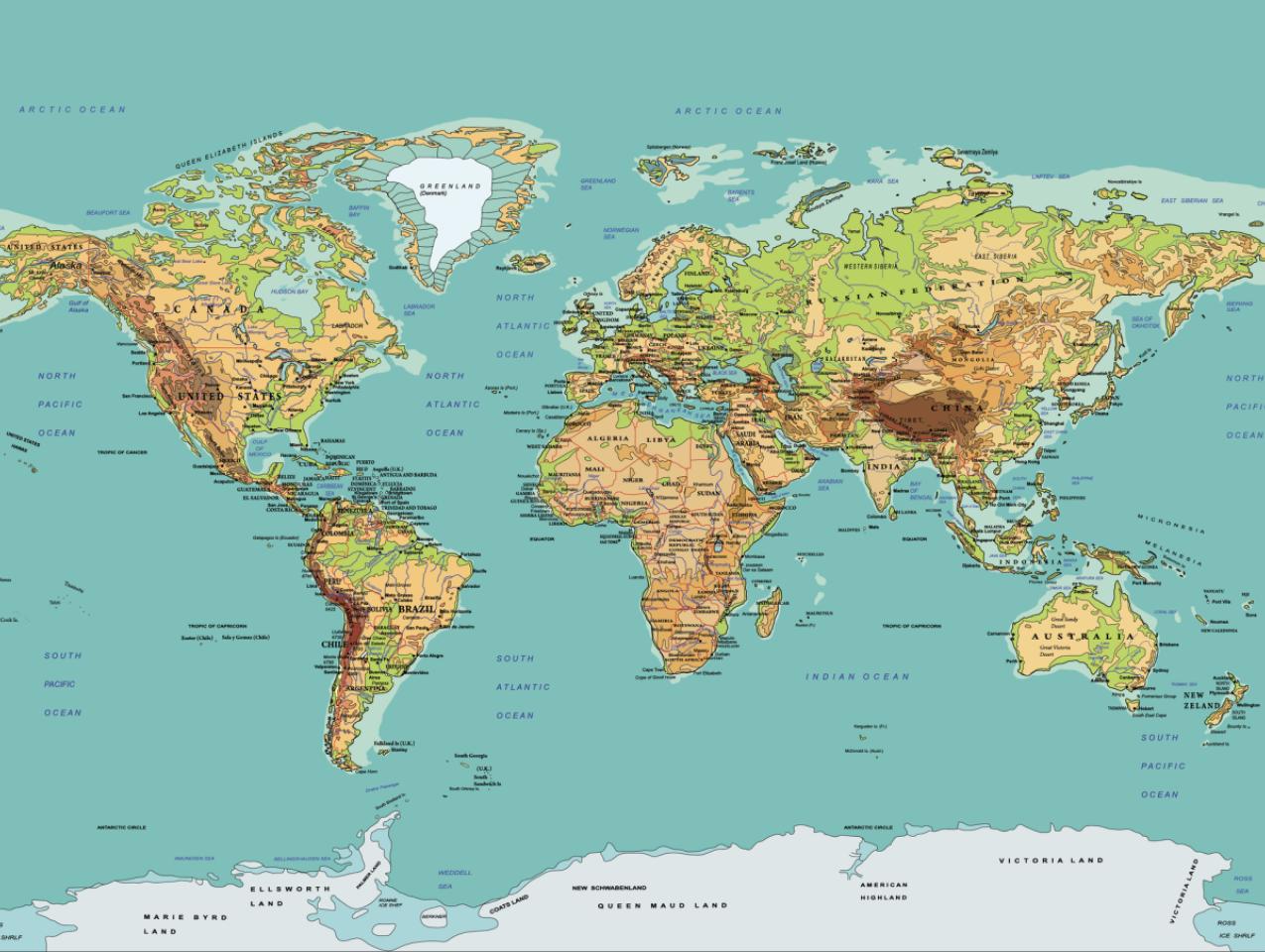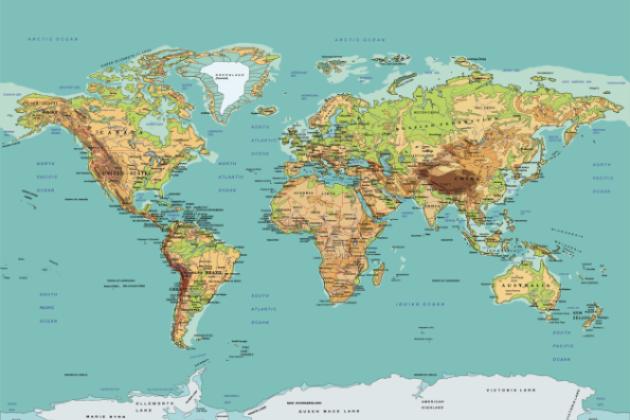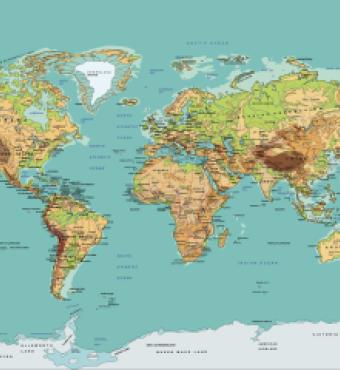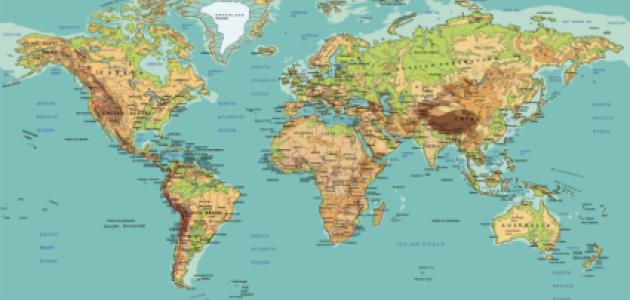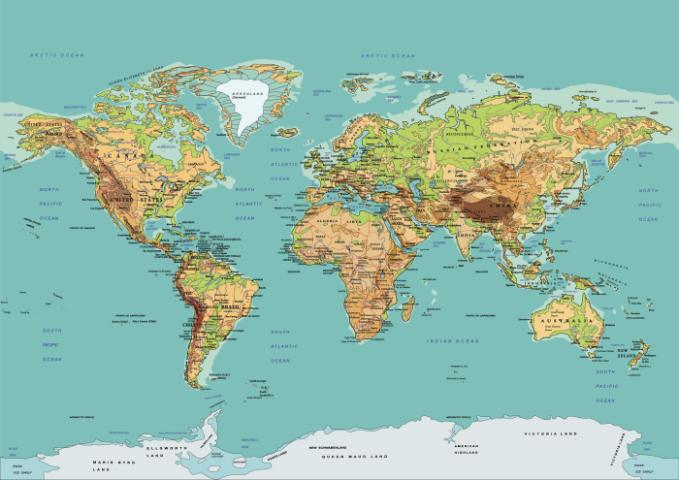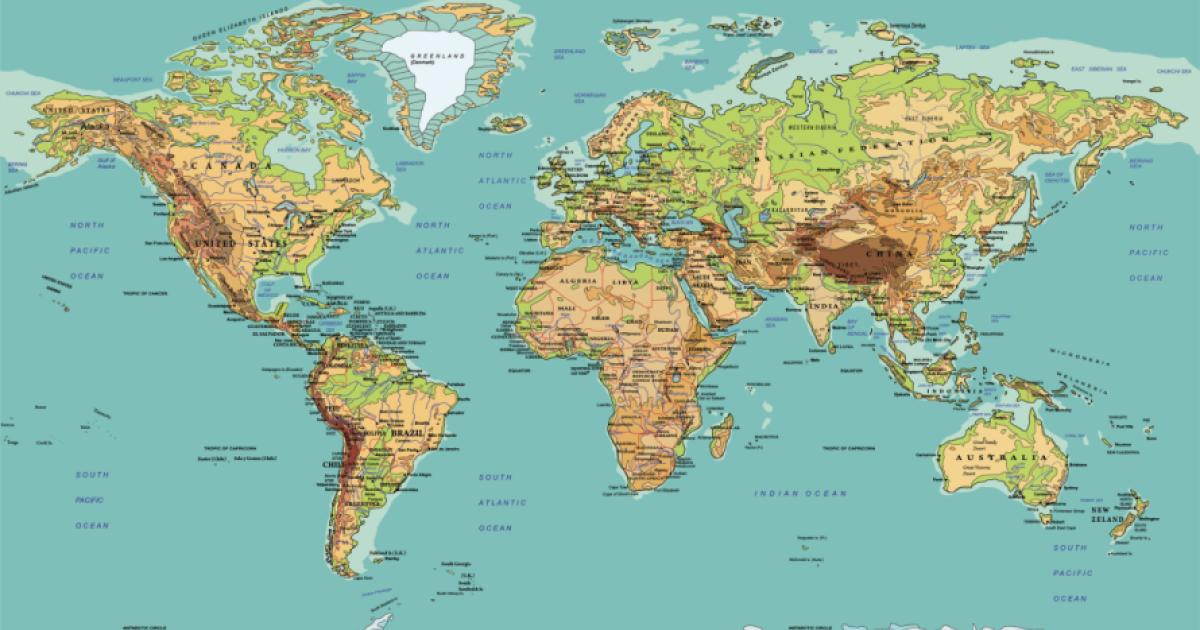- Middle East
In India’s regional strategy, the countries in the Middle East, particularly the Gulf states, Israel and Iran hold a pivotal place. India has tried to balance its policy in the region to prioritize energy security and accelerate economic ties. However, India will continue to be susceptible to the range of intra-regional conflicts that will test its ability to protect its interests.
Its regional strategy in the Middle East is independent of its relationship with China, with which India shares a 3488 km long border, running along the states of Jammu and Kashmir, Himachal Pradesh, Uttarakhand, Sikkim and Arunachal Pradesh. It is not fully demarcated and the process of clarifying and confirming the Line of Actual Control is in progress. The border, is currently active in the Aksai Chin region of J & K and the border along Arunachal Pradesh. Meanwhile, the Government is undertaking the construction of 73 roads of operational significance along the Indo-China border to redress the situation arising from a lack of infrastructure along that border.
India’s regional strategy rests on five cardinal principles: first, to ensure against being enmeshed in regional conflicts; second, to advance security cooperation and intelligence exchange to protect its homeland and citizens in the region; third, to ensure that, as in the past, these countries do not become the means and conduit for Pakistan’s terrorism aimed at India in Kashmir; and, fourth, safeguarding the security and welfare of Indian nationals in the region.
The Middle East carries great political weight because of its influence in India’s political, economic and social life. Its importance has continued to increase with India’s growing role as an economic force and global player. The key components of the relationship have been energy, trade and investments, remittances, security and strategic partnerships, and people-to-people exchange.
During PM Narendra Modi’s tenure since 2014, Indian policy has recognized the need for a holistic strategy towards the Middle East that strengthens economic ties and institutionalizes long-term cooperation. The focus is on three main axes: the Arab Gulf states, Israel and Iran.
India has elevated its relations with the UAE and Saudi Arabia to strategic partnerships. Maintaining a close relation with Sunni monarchs of the Arab world, without disrupting the relationship with Iran, has been possible because India has refrained from getting politically involved in any conflict there. Similarly, keeping a good relationship with Iran has not hampered India’s growing relationship with Israel.
India’s security cooperation with these countries has two strands: first, its vulnerability to terrorism sponsored by Pakistan and its intention to keep abreast of internal tensions in view of the large number of non-resident Indians living and working in the region.
The relationship with Saudi Arabia, UAE and Qatar has been consolidated by growing investments, through their sovereign funds, and in Indian industry and start-ups. Qatar is the largest provider of natural gas, on a long-term basis, through the terminal at Dahej on the Gujarat coast.
India’s relations with Israel are unique considering they had no diplomatic relations until 1992, when the Middle East peace process started. India’s support of the Palestinian cause had been an article of faith ever since its own independence. During the last three decades, however, relations with Israel have grown in diversity and depth reaching a high point with PM Modi’s visit in 2017. Initially based on securing India’s requirements of hard-to-get military hardware and systems, it now includes agricultural technology and irrigation techniques, medical start-ups and investment in real estate in India.
The growing rapprochement between Israel and the Gulf Arab states, like the UAE and Bahrain, and unofficial relations with Qatar and Saudi Arabia, and peace treaties with Egypt, Jordan, Oman and Sudan, has minimized the importance of the Palestinian issue. Israel has also stayed away from opening relations with Pakistan although it does have active relations with China.
India’s excellent relations with Israel are no longer a handicap with the Gulf states. With Iran, the Israeli factor is also unlikely to have a negative impact. India has been able to keep its relations on an even keel with Iran despite issues regarding the operationalization of the Chabahar port and exploitation of oil reserves in the South Pars field.
Iran’s relations with China, on the other hand, have increased by leaps and bounds with a 25-year Strategic Agreement between the two countries. Over the last four years Chinese and Iranian strategists have mapped out the contents and architecture of a strategic agreement that includes the military, economy, energy, telecommunications, industry, infrastructure, science and education sectors. It will transform the strategic and geopolitical equilibrium in the Middle East in the long run.
President Biden’s decision to reduce US involvement in the Middle East and to shift the nation’s focus to the Asia-Pacific acknowledges China’s virtual attainment of superpower status. The US may well look to include India, the largest democracy, as a partner in this process of confronting Beijing.
The emergence of the Indo-Pacific as a new geographic space—bringing together the Indian and the Pacific Oceans—represents the new strategic reality of the twenty-first century. As India continues to debate the role and value of the Indo-Pacific as a region, it was extremely cautious of its engagements and the use of the region’s name. While the Indo-Pacific, as a whole, presented a new set of opportunities to raise India’s security profile, India was equally wary of being seen as part of a Western–led coalition to push back against China. In retrospect, India’s goal was to use the Indo-Pacific as a tool to advance its strategic interests and respond to a changing security environment.
For India, the Indo-Pacific has to be a balancing strategy dictating a careful consideration of its political and diplomatic collaborations and the scope of such engagements. In fact, New Delhi’s use of the region’s name itself was limited until Modi’s speech at the Shangri-La Dialogue in 2018.
Despite New Delhi’s presence in the Indian Ocean, maritime security has actually remained outside of India’s strategic interests, concerns, and thinking, due to the greater threats from the continent.
The Indo-Pacific therefore is a new domain in India’s foreign policy engagements, representing the shift in New Delhi’s strategic environment—expanding its focus on threats solely from its continental borders to those in its maritime space as well. Yet, while the Indo-Pacific presents new opportunities for India’s great power ambitions, India’s priorities and significant investments will remain in the Indian Ocean Region (IOR).
India’s own approach toward the Indo-Pacific is shaped by a new strategic environment coinciding with the rise of China, particularly in the Indian Ocean region and South Asia. At the same time, it was equally important to distance itself from any kind of groupings or “alliances of containment.” While priorities and capabilities remain different, Beijing’s expanding presence across the Indo-Pacific presents a common strategic challenge for Canberra, New Delhi, Tokyo, and Washington. Regardless, in India’s Indo-Pacific vision partnerships are the central pillar of New Delhi’s strategy.
The emergence of China as an additional and perhaps an alternative security provider compelled India to review its foreign policy choices under the government of Prime Minister Modi. The Indian Ocean is a secondary area of concern for Australia and Japan, while the Pacific Ocean is a secondary area of concern for India. Given the different areas of priorities, each nation will have a different political appetite and available resources for the Indian and Pacific Oceans. Indo-Pacific priorities will depend on national interest shaped by the immediate neighborhood and perception of threats from all nations.
Therefore, a successful Indo-Pacific collaboration lies in a convergence of policies through coordinated and issue-based partnerships framed by a model of burden sharing. While the Indo-Pacific may have been a necessary construct as a response to a changing world order, it has structurally altered India’s foreign policy priorities and engagements. Effective coordination based on converging strategic interests and principles is the best way forward in operationalizing an Indo-Pacific partnership.
India has for long been the first responder in humanitarian crises in the (Indian Ocean Region) IOR from Madagascar to Mozambique. It started mission based deployment in 2017and signed the Logistic Exchange Memorandum of Agreement with the US, France, Australia, Singapore and South Korea.
India inaugurated the Information Fusion Center for the Indian Ocean Region (IFC-IOR) in December 2018. The center aims to provide regional Maritime Domain Awareness (MDA) by “building a common coherent maritime situation picture and acting as a maritime information hub for the region.” In an effort to increase MDA capabilities across the IOR, New Delhi has also installed a network of coastal surveillance radar across the Maldives, Mauritius, Seychelles, and Sri Lanka to help the island nations better secure, through exchange of prior information on the movement and identity of commercial non-military merchant vessels also known as white shipping agreement, their vast exclusive economic zones. Additionally, India has helped Bangladesh and Myanmar install coastal radars in the Bay of Bengal. Through white shipping agreements, India also receives the data from these radar networks across the Indian Ocean.
New Delhi has thus signaled that while it accepts the emergence of a new order, it supports one that is based on rules and norms. India extended its support to regional architecture and groupings as one of the pillars of the new order.
The Indo-Pacific will continue to provide New Delhi an opportunity to raise its profile and secure its strategic interests if it is open to new ideas and frameworks such as a burden-sharing model centered on issue-based partnerships. Such an approach will allow India to maximize its limited resources and capacities to better prepare for a new security environment. Going forward, India’s actions and deliverables in the Indo-Pacific will lay the foundation for its role in a new global security architecture.







